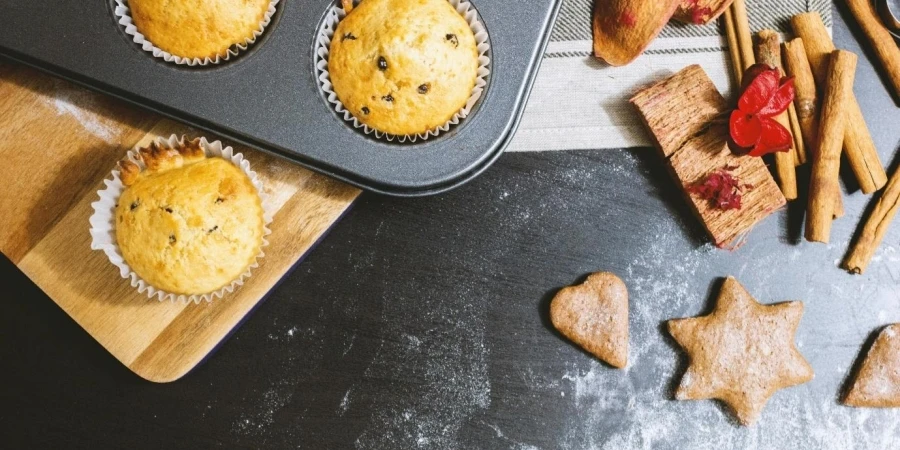Choosing the ideal dessert utensils is crucial for experts aiming to consistently uphold effectiveness and achieve quality outcomes. Awareness of industry trends and technological progressions can empower purchasers to make choices that elevate efficiency and the standard of their products. From lasting stick materials to versatile tools with multiple functions, having a good grasp of what to seek in dessert gear can enhance manufacturing processes. This piece examines market trends and presents seasoned advice on selecting the most suitable tools. By utilizing the right resources and strategies, businesses can remain competitive while satisfying the increasing desire for high-quality desserts.
Table of Contents
● Market overview: A look at the dessert tools industry
● Exploring different dessert tools and their unique features
● Key factors to consider when choosing the right dessert tools
● Conclusion
Market overview: A look at the dessert tools industry

Current market scale and growth
The market for dessert tools is growing steadily due to the increasing demand for premium bakery items and home baking trends among consumers worldwide. As per Grand View Research findings, the bakery processing equipment sector achieved a value of USD 14 billion in 2023 and is projected to grow at a CAGR of 6.7% from 2024 to 2030. The continuous growth is driven by the uptick in packaged goods and the escalating requirement for long-lasting utensils in both professional kitchens and home environments. The need for baking equipment, like silicone molds and nonstick pans, is increasing steadily, which is crucial for purchasers aiming to improve operational effectiveness.
Market segmentation and trends
The market for dessert tools can be categorized based on the types of equipment (such as baking pans, mixers, and decorating tools), the geographical regions where they are sold (like North America, Europe, and Asia Pacific), and the specific customers they target (including home bakers or commercial enterprises). Asia Pacific holds a large share of this market due to the rising demand for Western-style pastries and desserts. On the other hand, North America has shown a trend towards high-end customizable bakeware. Businesses in the sector are increasingly investing in lasting and efficient equipment to meet the high demands of production activities, and home bakers are also driving the need for creative and adaptable tools. The growing trend of specialty baked goods, such as gluten-organic options, is driving this change in the market landscape.
Technological advancements driving demand
In the realm of dessert tools, market evolution is underway thanks to progress like silicone tools and nonstick coatings, transforming the landscape of options available to consumers and businesses alike. These advancements include waste reduction, increased efficiency, and enhanced durability, which benefit bustling commercial environments. As highlighted by Chefs’ Toys, the shift towards silicone baking mats and advanced nonstick materials has brought a wave of change in the industry. It delivers top-tier outcomes with added convenience in cleanup and handling, making it a game changer for those aiming to streamline operations while upholding product quality standards consistently.
Exploring different dessert tools and their unique features
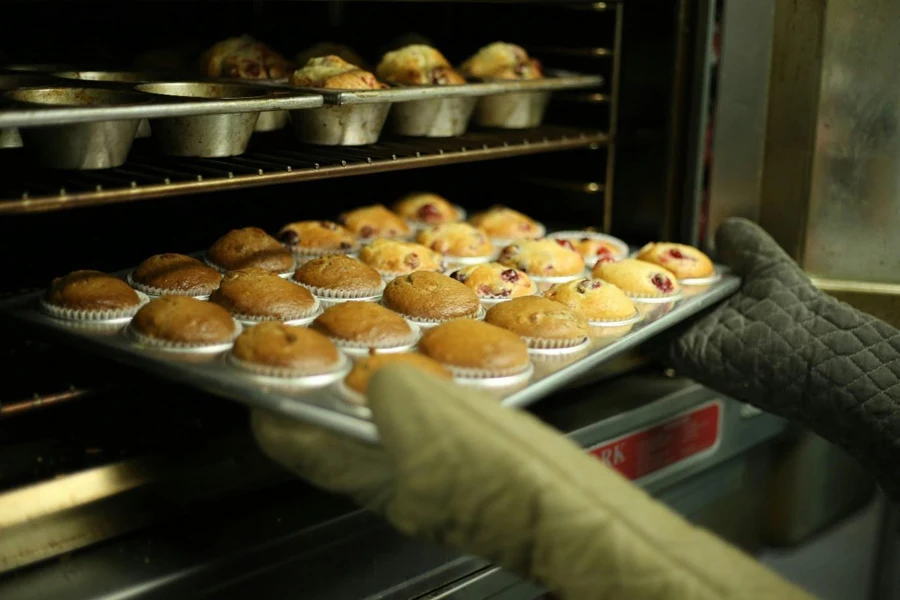
Baking pans and molds
When making desserts, it is important to choose the right baking pans and molds for the job. Springform pans are a great choice because they have a removable base and a clasp, making it easy to whip up delicate desserts like cheesecakes without worrying about ruining their edges. Tart molds, with their fancy fluted edges, make your pastries look more appealing and help distribute heat evenly so you get that satisfyingly crispy and golden crust every time. The type of material used for the pans is important. Aluminum pans are popular for their heat distribution capability while carbon steel pans are known for being durable and resistant to warping at temperatures. Silicone molds are handy for creating intricate shapes as they provide a stick surface that allows for easy and detailed release without needing extra greasing or parchment paper. Moreover, bundt pans with their complex and unique designs benefit from being made of heavy gauge steel to prevent uneven baking and ensure the structure remains intact when removing intricate cakes.
Decorating tools
Precision and detailed designs are vital in baking, where decorating tools play an important role. Piping bags are crafted from various materials, with silicone piping bags standing out for their durability and flexibility in handling icings like buttercream. When creating well-defined details such as rosettes or leaves, stainless steel piping tips are indispensable in goods as they come in various sizes and shapes, ranging from star tips to round tips. Professional baking kits come with a handy coupler system that lets bakers change tips without emptying the bag each time they switch up designs. Another must-have tool is the spatula, which comes in various lengths (usually 9 to 13 inches) and is ideal for smoothly spreading icing over cakes without any unwanted marks left behind. Top-notch spatulas boast heat-flexible blades that are crucial for effortlessly spreading and controlling thick icings or melted chocolate while maintaining the design flow.
Measuring tools
Accurate measurements are essential in baking, as slight errors can significantly affect the final product’s outcome. Many commercial kitchens rely heavily on digital kitchen scales that offer precision down to 0.01 grams when measuring amounts of ingredients such as yeast, baking soda, or spices, where tiny variations in weight can make a big difference in texture and taste. The tare function found in these scales is a feature that allows containers to be zeroed precisely, which minimizes waste and ensures precise measurements are taken. Measuring spoons and cups are usually crafted from steel or sturdy plastic to ensure durability and feature etched measurements that will not wear off. When it comes to measuring liquids, many opt for graduated glass pitchers that can withstand high temperatures, offer excellent clarity for easy reading, and are a breeze to clean. This makes them perfect for handling cold and hot liquids.
Mixing tools
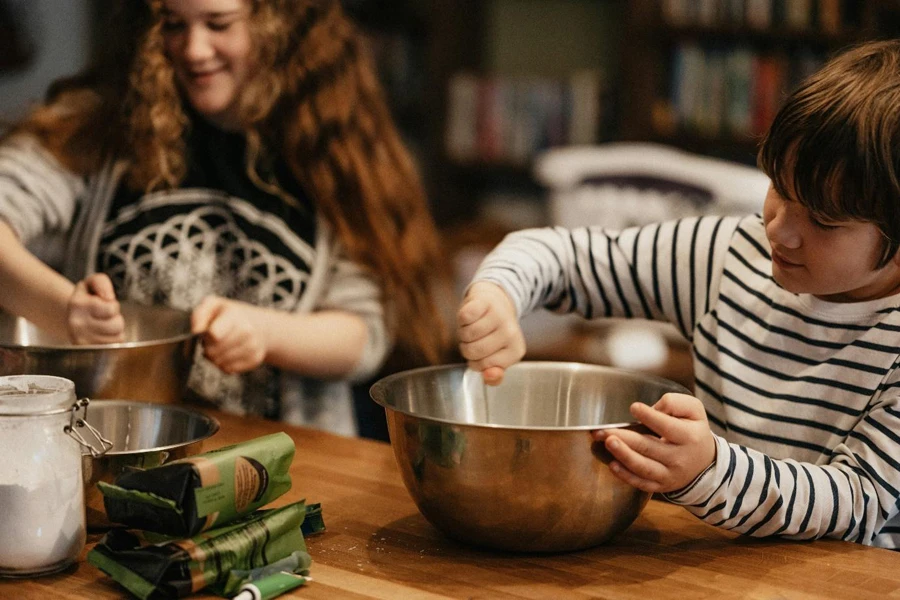
Stand mixers play a key role in baking and come in various models with powerful motors that can handle dense dough like brioche or sourdough due to their strength reaching up to 1.3 horsepower. They usually have speed settings reaching up to 250 RPM for quick whisking and lower speeds ideal for gentle folding or kneading. Planetary mixing action ensures thorough incorporation of ingredients by moving the attachment in an elliptical pattern around the bowl. Hand mixers, although less powerful, provide greater maneuverability for smaller batches or delicate tasks like folding whipped cream into mousse. Balloon whisks with flexible stainless steel wires are essential for incorporating air into mixtures, crucial for achieving the desired lightness in meringues and whipped cream. Larger, heavier-duty whisks are preferred in professional kitchens for their ability to handle thicker batters and doughs, reducing strain during prolonged mixing.
Specialized tools
Craftsmanship is essential in bread making, and tools like proof baskets (also called bannetons) shape the structure and look of artisan bread. These baskets crafted from rattan or cane help create the design found in traditional sourdough loaves while aiding in regulating moisture levels during the proofing stage. Rollers made from marble, wood, or silicon are essential for achieving the desired dough thickness. Using a rolling pin with tampered edges is helpful for precisely adjusting dough thickness and rolling it evenly over expansive pastry sheets. Work with dough scrapers and bench knives crafted from carbon steel to handle and divide dough smoothly without sticking or ripping issues. Cookie cutters typically come with edges that guarantee well-defined slices through dense dough, which is a critical factor for consistent baking in professional kitchens.
Key factors to consider when choosing the right dessert tools
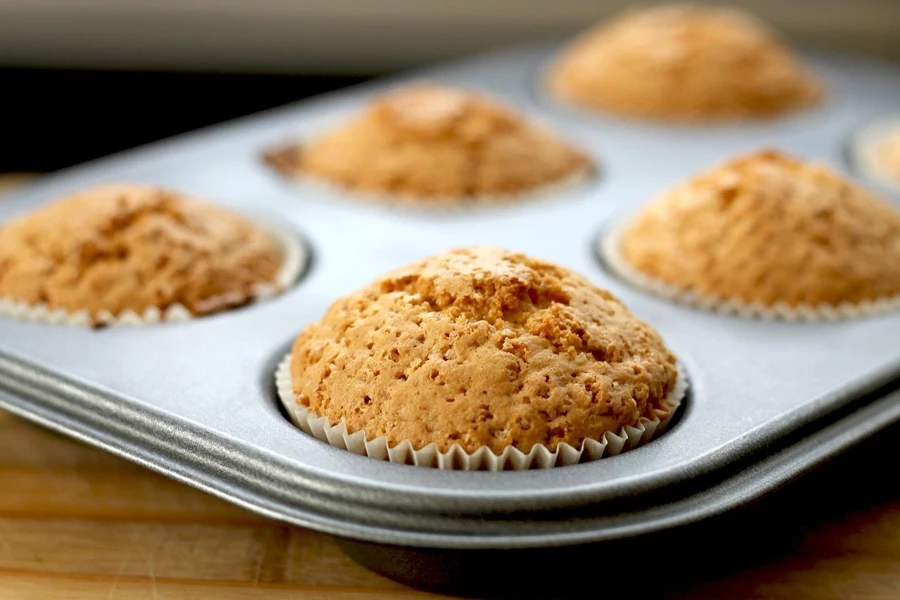
Material quality
The type of materials used in dessert tools is essential for their effectiveness and longevity. Silicone is commonly used for molds and spatulas because of its flexibility and ability to withstand temperatures up to 500°F. It doesn’t react with food, which helps prevent lingering flavors and odors. Additionally, it is easy to clean due to its non-stick properties. However, silicone may not be the right choice for tasks requiring shaping or cutting as it is less rigid than other materials. Many chefs prefer using steel for kitchen tools, like whisks and measuring spoons, because it is durable and resistant to rust and can withstand daily use without getting misshaped or bent out of shape easily. This is due to its strength qualities and heat resistance properties, making it perfect for handling high temperatures. On the other hand, carbon steel is a good choice for baking pans as it conducts heat effectively to ensure even baking outcomes; however, proper care is needed to avoid rust, especially if not coated with a protective layer.
Non-stick capabilities
Having surfaces that don’t stick is important in baking to ensure things come out clean and not wasted quickly since speed and accuracy are important. Non-stick coatings, like Teflon or ceramic, help stop baked items from sticking to pans, so you don’t have to use oil or grease. It’s especially handy for treats, like cakes and pastries, where sticking could mess up their appearance. Silicone molds also naturally don’t stick much, so you can take out desserts without messing up their shape. Nonstick coatings also help speed up the cleaning process in kitchen settings, an aspect to consider for efficient operations in fast-paced kitchen environments. Nevertheless, it is important to handle metal utensils carefully with nonstick surfaces to prevent scratching and preserve the durability of the tools.
Tool versatility
For those working in restaurants and baking at home, having tools that can serve many purposes is crucial. Multi-functional tools do not just save space but also cut down on the clutter of having many different items making the baking process more efficient. For instance, dual-purpose whisks that can switch between balloon and flat designs offer flexibility for tasks like whipping and stirring. Similarly, measuring cups with two compartments cater to dry ingredient measurements, minimizing the need for many kitchen gadgets. Hand mixers with attachments offer versatility for kitchen activities such as whiskin or kneading dough. Their multi-functionality saves money and streamlines tasks in busy kitchens where efficiency is crucial.
Ergonomics and ease of use
An ergonomic design is important for boosting efficiency and preventing fatigue when using items for long periods in the kitchen or bakery setting. Equipment such as spatulas with handles and mixing bowls with non-slip bottoms are key in improving maneuverability and precision in bustling professional kitchens. Stand mixers with adjustable heights and tilting heads offer flexibility and ease of use, allowing bakers to switch between tasks with minimal effort. Handles that are contoured to fit the hand’s natural shape also reduce fatigue, making them indispensable for high-volume baking operations. In addition, lightweight tools, especially handheld mixers or rolling pins, are easier to maneuver and can significantly cut down on preparation time without compromising on performance.
Cost-effectiveness
Investment in dessert tools involves balancing cost and quality for businesses seeking consistent output over time. Although opting for quality stainless steel tools may come with a higher initial price upfront due to their durability factor, they are a wise long-term investment by reducing the frequency of replacements needed. Conversely, suppose you opt for more budget-friendly silicone molds, their nonstick properties and flexibility can offset the start-up cost, leading to savings on greasing agents and parchment paper expenses. For businesses, investing in high-performance stand mixers or durable carbon steel pans can reduce downtime caused by tool failures and improve overall productivity. Careful consideration should be given to lifetime warranties or long-term performance guarantees, as these add value to the purchase by ensuring that the tools remain reliable over time.
Conclusion
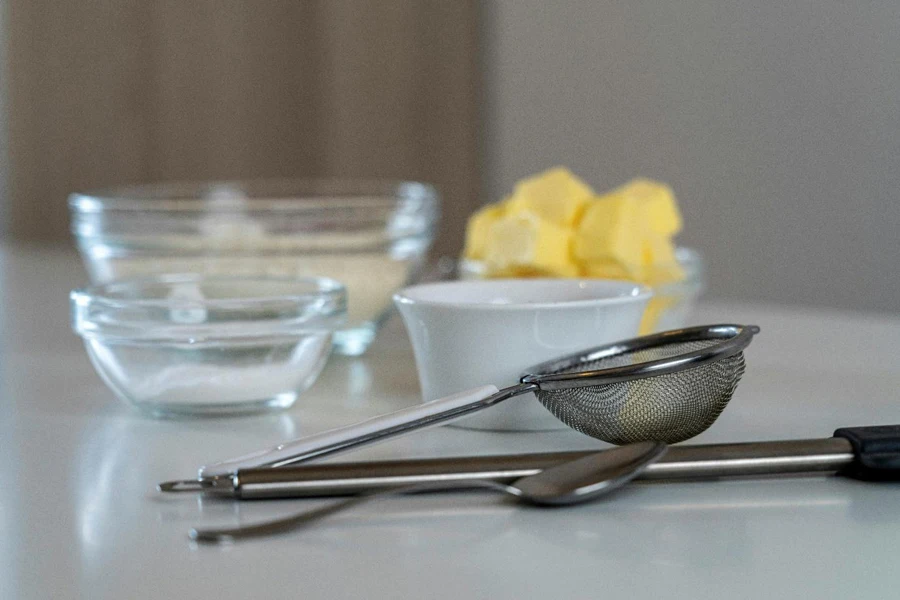
Selecting high-quality dessert tools is critical for ensuring consistency and efficiency in professional baking environments. By analyzing market trends and the versatility of materials and tools, companies can make informed choices that enhance efficiency while upholding exceptional standards. Investing in ideal tools improves product quality and supports sustained operational excellence in a competitive industry.
